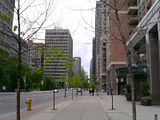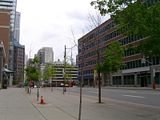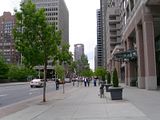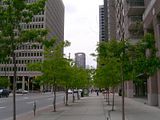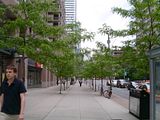buildup
Senior Member
I'm not certain when it happened but Bay street from around Charles south to at least Dundas is lined on both sides with young trees that seem to be taking. I assume they have access to watering systems beneath the pavement.
They are rather close to the road often about 18 inches.
Does anyone know if these young trees are all the same species, and whether they will become large enough to provide an attractive capopy over the sidewalk?
Bay Street is quite busy, and the planting seems ambitious in that context.
They are rather close to the road often about 18 inches.
Does anyone know if these young trees are all the same species, and whether they will become large enough to provide an attractive capopy over the sidewalk?
Bay Street is quite busy, and the planting seems ambitious in that context.






